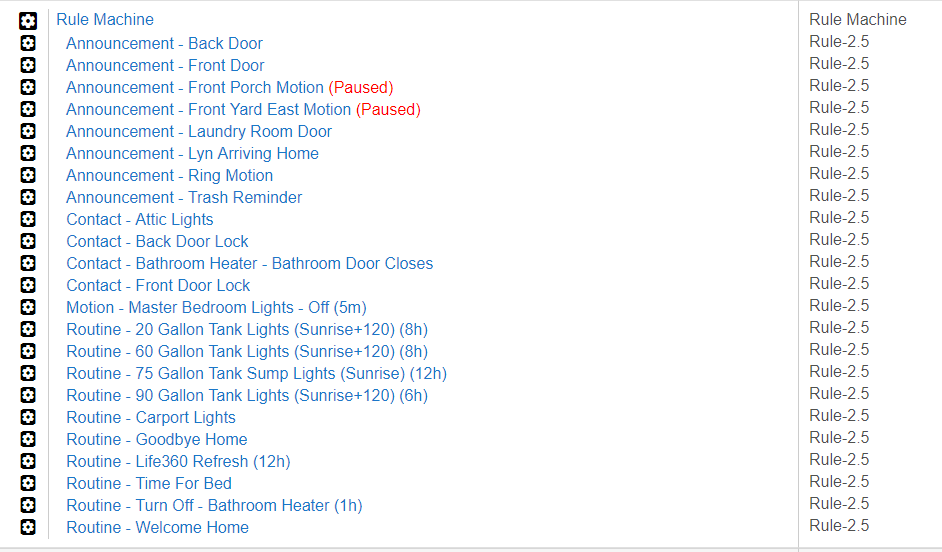My Hubitat Story -
I was an Iris user for about 2 years. Wasn't particularly happy with it, but learned to live with it nevertheless. Late last year I decided I needed something more reliable. What bothered me most about Iris was that it was heavily dependent on the internet connection. So, I started looking at Samsung ST, but there was no clear answer about what is local and what is on cloud. I really didn't understand why something that could be simply run locally needed to be run on the cloud. That is when I heard about Hubitat. Bought it because of the "fully local" operation and great reviews. Spent a day playing with the Rule Machine and lost heart and gave up on it thinking I will figure it out later.
Then came Iris' announcement about imminent suicide. It was already too late to return the Hubitat, so I decided to "figure it out".
I am a Java programmer, so I decided to completely ditch the RM and just write the groovy code for it. Wow ! What an experience !! My Hubitat is now really coming together completely on code that I wrote myself to make it work the way I want. I am in love with it now. So far, I have about 5 motion detectors, 3 door contacts, 2 keyfobs, 1 siren, 1 chime and 3 outlets - all working in weird fashion (the way I wanted it). My wife goes crazy at times, but I love that too.
Anyone who has the remote inclination for programming should just code this instead of wasting your time with RMs. And for those who don't have that inclination, pick up one of these to develop that inclination. You won't regret it !!






